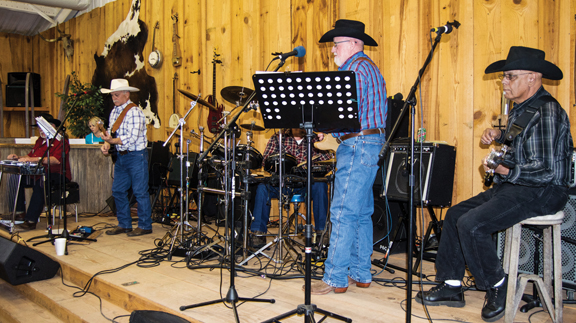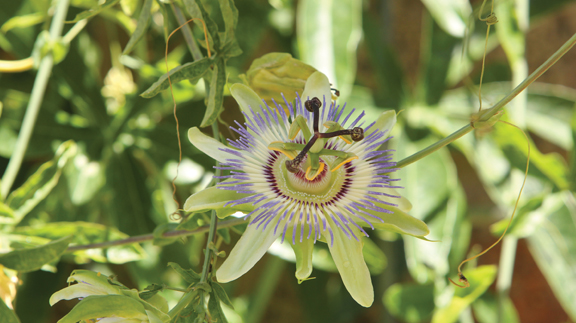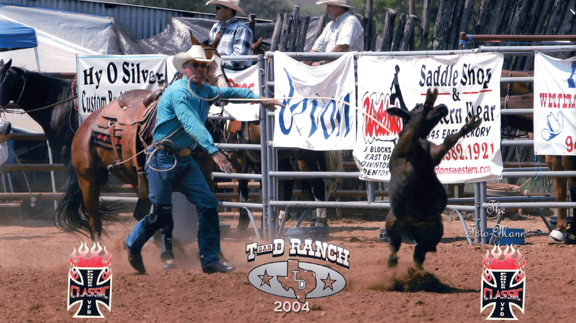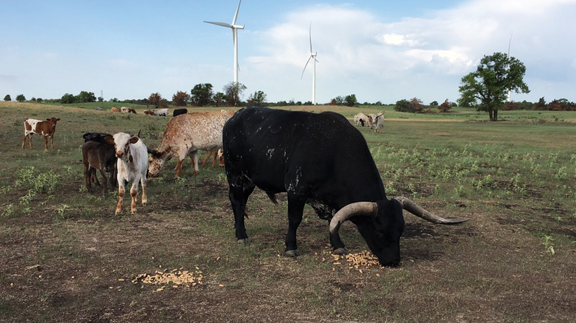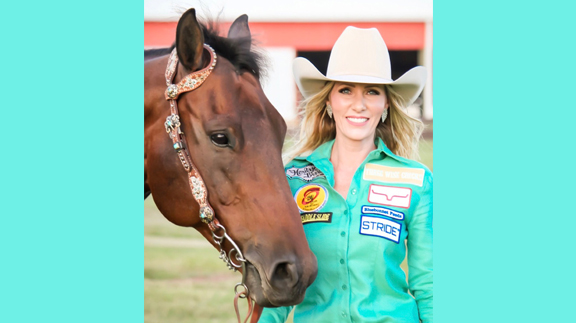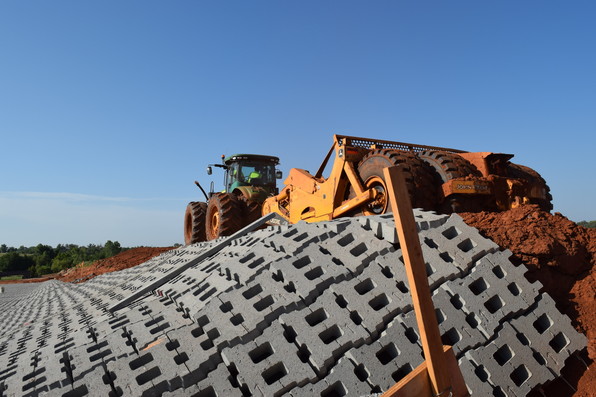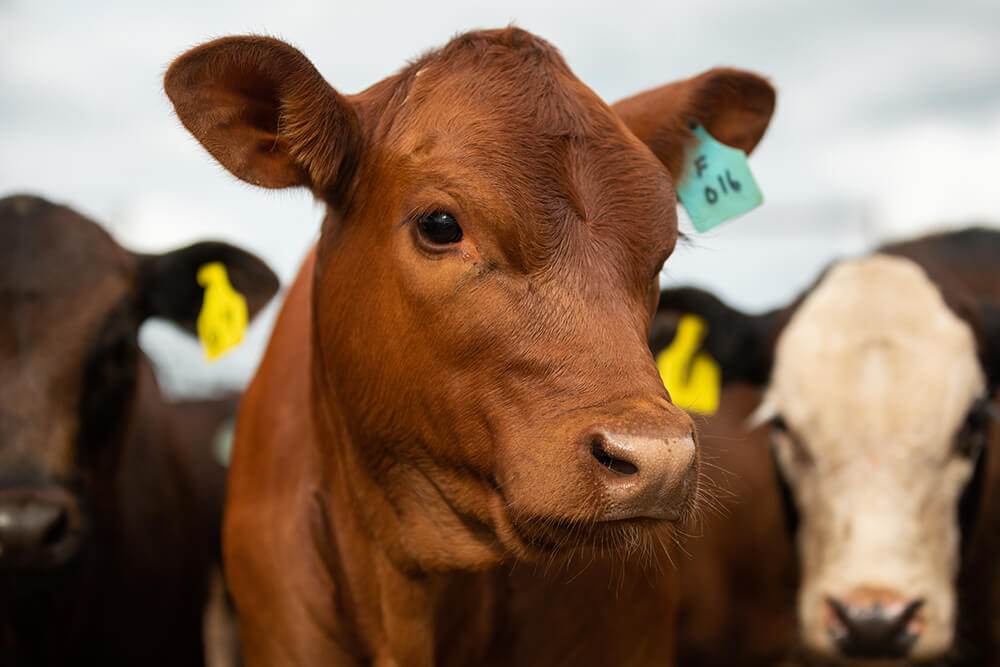Outdoors
Drones for Wildlife Management

By Russell A. Graves
The feeling is scary and amazing all at the same time. Within minutes of my new unmanned aerial vehicle (UAV), or drone, arriving at my rural home north of Childress, Texas, I have it unboxed and ready for flight. Using technology not even available just a few years ago, I held the remote controller in my hands while I looked at my phone that’s attached to the controller. With a wireless connection, I can see on my phone what the UAV’s camera sees, and while the craft is still on the ground, I’m enthralled.
Starting the drone, the props instantly whir to life. While the craft idles, I go over my mental checklist on how to make it fly. Taking a deep breath and with a bit of nervousness, I accelerated the craft. Dust wafts from beneath it as it escapes the bounds of gravity for the first time under my control. In flying, altitude in an asset, so I accelerate the craft to climb and clear of any obstructions. Within a couple of seconds, it’s 100 feet above my front yard and hovering. Looking at the drone and then back at my iPhone, I see my house and yard in a way I’ve never seen it before.
The way to learn to walk is to take baby steps – the same as flying a drone. My first baby step in learning to fly was to travel linearly – straight away and straight back. As I fly, I can see my property in an intimate way that I’ve never seen before – every tree and gully is clearly visible in astounding detail. I’ve flown over the place in a helicopter and airplane before, but I’ve never been in control of the craft. The ability to fly so low and see the ground below in such intricate detail is empowering. Before long, I’ve flown and photographed my whole property and built a cache of photos that I can analyze once I’m done flying.
Brief History of Drones
UAV’s have been around for a while and have been used since the dawn of flight. As the mechanical age matured, the military began to perfect radio controlled technologies, and UAV’s were used almost exclusively for military uses. At the dawn of the 21st century, their use became more high profile as the technology advanced to the point where images were streamed from battlefield environments.
Over time their use perfected from almost strictly surveillance to more and more tactical roles as they now have the ability to be flown remotely and deploy armaments. Today, the United States Air Force flies three times as many UAV’s as they do manned vehicles.
Like many technologies, drones eventually trickled into the civilian marketplace. Today, they are integrated into our society as retailers look to ways to use them for deliveries, and other uses are maturing at a fast pace. Amazing, considering just a few years ago few had considered the technology for consumer use.
Less than five years ago, all of that changed when companies like DJI and Parrot began coupling the technologies needed to make small, unmanned aerial vehicles available for the everyday consumer.
Today, these small units are packed with technology. Capable of both controlled and autonomous flight, today’s consumer drones pack features such as global positioning guidance systems, broadcast quality cameras, first person view, and pre-programmable flight routes. As such, the technology is ripe for a variety of civilian uses including wildlife and land management.
Learn more in the August issue of OKFR!
Outdoors
Adding years to the significantly important lives of Oklahoma’s Flood Control Dams
Recently, local, state, and federal officials toured the Upper Elk Creek Site 23D Rehabilitation on the east edge of Elk City, Okla.
New life is being given to this flood control dam and the tour was a way to showcase those efforts along with the watershed project sponsor, North Fork of Red River Conservation District. Originally constructed in 1976 at a cost of $102,401 and classified as a significant hazard dam, this is now a high hazard dam. An increase in risk of loss of life and property damage due to a potential overtopping breach of the dam during an extreme flood event is the reason site 23D is undergoing this rehabilitation.
Although Site 23D is functioning as originally planned and providing downstream flood damage prevention, this rehabilitation means that in the future, Site 23D will reduce the potential of a dam breach and subsequent potential damage to downstream properties and infrastructure and will reduce the risk of loss of life. Additionally, the rehabilitation of site 23D allows for the service life of the dam to be extended for at least a century.
In this project, the top of dam elevation is being increased by 4.4 feet. Due to the raised top of dam elevation, the county road is being raised as well. A new 30-inch reinforced concrete pipe is being installed using a technique known as “jack and bore.” Articulated concrete blocks (ACBs) are being added to the exit channel of the spillway to provide erosion protection and prevent head cutting. The contractor for the rehabilitation construction is C-P Integrated Services, Inc., of Oklahoma City. The rehabilitation construction costs are $4.3 million, 65 percent of this cost is provided by the federal government while 35 percent is provided by the Conservation Commission on behalf of the watershed project sponsor, North Fork of Red River Conservation District.
The upstream flood control dams have received incredible support from Oklahoma’s congressional and state leaders.
One form of support that is significant was the passage of SB 1938, authorizing the Oklahoma Capitol Improvement Authority for bond issuance in the amount of $17.5 million on behalf of the Oklahoma Conservation Commission. These funds are being used for the repair and rehabilitation of high-hazard dams pursuant to the Conservation District Act.
Trey Lam, Executive Director of the Oklahoma Conservation Commission, said, “This gathering captured a true picture of what created and has maintained the small watershed program for nearly 80 years. The dedicated and visionary North Fork of the Red River Conservation District Board hosted Elk City officials, a Conservation Commissioner and staff, along with Oklahoma Secretary of Agriculture Blayne Arthur and State Representative Todd Russ, USDA-NRCS engineers and staff. We were also very honored to have Congressman Frank Lucas and his field staff join us. The Watershed Program works best as a partnership of local, state and federal entities with a common goal of preventing devastating flooding while putting conservation on the ground in the watershed. The 2,107 flood control structures in Oklahoma would never have been built without such a strong partnership. All the partners are just as dedicated to maintaining the level of flood protection today and for the next 100 years.”
During the tour, U.S. Congressman Frank Lucas, a native of western Oklahoma and a longtime champion of the upstream flood control program, said, “In conservation these are the good old days; all we have to do is continue to work together and there will be benefits for generations to come. Am I proud of what we have done together? You bet. Thank you to each of you for doing what you do and thank you for helping me do what I do. Together we are going to make such a difference that the people downstream will never know it happened. That’s the ultimate compliment when things work so well that people don’t even know what you’ve done.”
Chris Stoner, the USDA Natural Resources Conservation Service Oklahoma State Conservation Engineer, said, “It was great to see the support from all different levels today with city, county, state and federal officials all in attendance. It was good for everyone to see a job that is under construction to show the scale and complexities of these rehabilitation projects.”
The 2,107 upstream flood control dams constructed in Oklahoma — the most of any state in the nation — have established a $2 billion infrastructure that provides benefits to thousands of citizens. In fact, it’s estimated that the dams and accompanying conservation practices in the watersheds provide approximately $96 million in benefits each year. Not only do they provide flood and erosion control to over two million acres of agricultural land in downstream flood plains, but they also provide sources of water for livestock and irrigation and habitats for wildlife. There are 42 flood control dams that were constructed as multi-purpose structures, which provide municipal and rural water supplies and recreation areas for local communities.
Altogether, the flood control dams in Oklahoma protect 2,756 county and highway bridges; provide a reduction in flooding for 41,744 farms and ranches; trap 19 million tons of sediment each year, which would otherwise end up in major streams and lakes, and they create or enhance 90,979 acres of wetlands.
Outdoors
THE FUTURE OF REGENERATIVE AGRICULTURE AND REGENERATIVE RANCHING
The idea of managing ranches with a focus on building healthy soils and implementing management that promotes healthy wildlife populations and their habitats, biologically diverse plant communities and livestock production is not a new concept. It is, however, a concept that depends on producers who are driven toward those outcomes.
As we look to the future, the external challenges facing U.S. producers will only become more intense. As the U.S. population grows toward a predicted 438 million people by 2050, the demand for food and land will increase.
Many questions are currently being asked. Do we continue to promote management that maximizes production on smaller acreages at the expense of land health, or are there alternative strategies that are productive and profitable while regenerating land?
The majority of our grazing lands are generally not well suited for cropland food production, yet they serve our planet by storing more than 30% of global soil organic carbon. Such intrinsic outcomes are called ecosystem services. Ecosystem services are the many and various benefits provided to humankind by healthy and functioning ecosystems.
Aldo Leopold once famously stated, “Conservation will ultimately boil down to rewarding the private landowner who conserves the public interest.” Opportunities to compensate producers for the production of multiple ecosystem services are currently in development. Ecosystem services are often grouped into functional areas of soil, air, water, plants and animals.
Many of the questions around the production of ecosystem services are common to most emerging markets, and these questions are not lost on regenerative ranching. Largely, much of the research focus in the future will be placed on which metrics matter, how do we most aptly measure them, how are they influenced by management, and can they be monitored at scales that are relevant to producers?
One of the cornerstones of regenerative ranching is a focus on diversifying products, therefore the diversification of market opportunities will continue to be an option for producers interested in regenerating landscapes.
With more data comes more understanding of the value of ecosystem services: how they could be a potential revenue stream and how they impact increased health and function on existing production enterprises.
Managing regeneratively allows our living soil to sequester organic carbon, which aids in climate mitigation strategies. Increasing organic matter provides our soils a greater ability to build aggregation, which allows it to hold more water and further serve as a filter to increase water quality and quantity. Biodiversity is also an outcome, from the soil microbiome to more functional habitats for wildlife species. These are all services provided by regenerative producers that benefit society as a whole.
Regenerative ranching has a positive future. More and more producers are questioning their conventional methods, measuring their outcomes and defining goals that include regenerative solutions. These are and will continue to be positive developments for the agriculture industry and for society as a whole. The question we should all ask ourselves is, what would a future look like without regenerative ranching?
Outdoors
Suzy Landess: Conservation carries history into the future

Feeling a connection to the land you live on is special.
However, appreciating such a connection that stretches back in time 134 years is almost indescribable.
At any given time, Suzy Landess doesn’t have to look at her family tree to appreciate history. Instead she can gaze upon the plains of the Oklahoma Panhandle.
Landess lives and ranches southeast of Guymon on the very land her great-great-great grandparents settled in 1886. That’s why when explaining the present, she starts with the past.
“My ancestors designed this ranch for cattle to water out of the creeks,” said Landess, who lives on the land her grandmother, Pearl Vantine, was born on. “Pastures were set up for rotational grazing along the creeks where the trees also provided shade and shelter for cattle and wildlife. As water in the creeks dwindled, my grandparents looked to windmills to provide a water source for livestock.”
Today, her family’s operation runs stocker cattle and commercial cow/calf pairs.
“This area of Oklahoma has changed since it was settled by the pioneers in the late 1800s,” she said. “Creeks and rivers crisscrossed the Panhandle and provided a water source for buffalo, cattle and early settlers. Today, water is a precious resource in the Panhandle. We no longer have creeks and rivers flowing and we now rely strictly on the Ogallala Aquifer for water in this region.”
Conservation has always played a significant role in ensuring that history continues.
“Conservation has been a way of life for me,” she said. “I have always known that it was up to me to be a good steward of this land. My grandmother always said that ‘This is God’s land and it is our responsibility to be good stewards of the land.’ ”
She can’t remember a time when they didn’t use rotational grazing practices and they have tried to maintain a certain amount of forage growth in all of our pastures. Plus, they have placed dirt tanks near their stock tanks in hopes of catching run-off water for cattle to drink to take the strain off their stock wells.
“Throughout the years, we have participated in many conservation programs through the FSA (Farm Service Agency) and NRCS (Natural Resources Conservation Service),” Landess said. “With the assistance of NRCS, my grandparents built dams in low areas and ravines in hopes of catching run-off rain water for livestock to drink. We converted abandoned irrigation wells into livestock wells.
The Environmental Quality Incentive Program (EQIP) has helped them run water lines and drill new wells on the ranch to improve the water on the ranch.
In the 1980s, Landess’ grandparents enrolled their farmland in the Conservation Reserve Program (CRP) and they still have ground in the program. Too, they began participating in the Conservation Stewardship Program (CSP) at the turn of the century. Through the CSP program, they were able to improve their management practices and learn detailed information about the nutrition that their grass provided.
There are many examples on the ranch of adapting to fit present needs.
“My grandfather Mark Vantine placed large 41-foot tanks on the ranch to water livestock,” she said. “I used those tanks as a water source for two pastures by placing fence lines down the middle so cattle could water from the same tank on both sides of the fence. As the windmills that my grandparents built started to need more and more repairs, I began to replace those windmills with solar pumps. We practice rotational grazing which is similar to the native buffalo’s flash grazing or cell grazing.”
By these and other conservation practices, she says they are taking good care of the land, and in turn the land takes care of their family.
In turn, Suzy and husband Bill Landess share their passion for conservation with others. Landess is a member of the Texas County Conservation Board and the Oklahoma Water Resources Board.
“I enjoy being a contributor to some of the boards that help producers in the Panhandle conserve our natural resources for future generations,” said Landess, who is also a member of the Oklahoma Cattleman’s Association and the Texas Southwest Cattle Raisers Association. “I have great respect for others who realize the responsibility that we have to be good stewards of the land and water resources. It is our duty to ensure that future generations have access to quality water sources and that they are able to carry on the legacy of American agriculture.”
Today, Landess son, Mark Landess, helps run the ranch. They are continually looking for ways to improve the pasture, soil and water on the ranch.
“Just as we taught Mark to be a good steward of the land, he is now teaching his children to do the same,” she said.
At that point, she once again returns the conversation to the past to explain the importance of the present and future.
“My grandmother (Pearl Vantine) is my mentor,” Landess said. “She learned to swim in the Coldwater Creek just north of my house and they often ate fish that they caught in the creek. She indoctrinated in me the importance of conserving our natural resources and persevering the land for future generations.”
Editor’s Note: The Oklahoma Blue Thumb Calendar highlights important information about conservation, has a featured producer(s) in the months of February through October, and provides contact information for both Blue Thumb staff and Conservation Districts. Plus, this year’s project includes an in-depth producer(s) feature story, such as the one you just read. Landess is featured in April of the calendar. If you would like a copy of the free 2021 Blue Thumb Calendar, please contact Blue Thumb Program Director Rebecca Bond at [email protected].
-

 Country Lifestyle7 years ago
Country Lifestyle7 years agoJuly 2017 Profile: J.W. Hart
-

 Outdoors6 years ago
Outdoors6 years agoGrazing Oklahoma: Honey Locust
-

 Country Lifestyle2 years ago
Country Lifestyle2 years agoThe Two Sides of Colten Jesse
-

 Attractions7 years ago
Attractions7 years ago48 Hours in Atoka Remembered
-

 Farm & Ranch5 years ago
Farm & Ranch5 years agoHackberry (Celtis spp.)
-

 Outdoors4 years ago
Outdoors4 years agoPecan Production Information: Online Resources for Growers
-

 Equine7 years ago
Equine7 years agoUmbilical Hernia
-

 Country Lifestyle1 year ago
Country Lifestyle1 year agoSay Yes!

